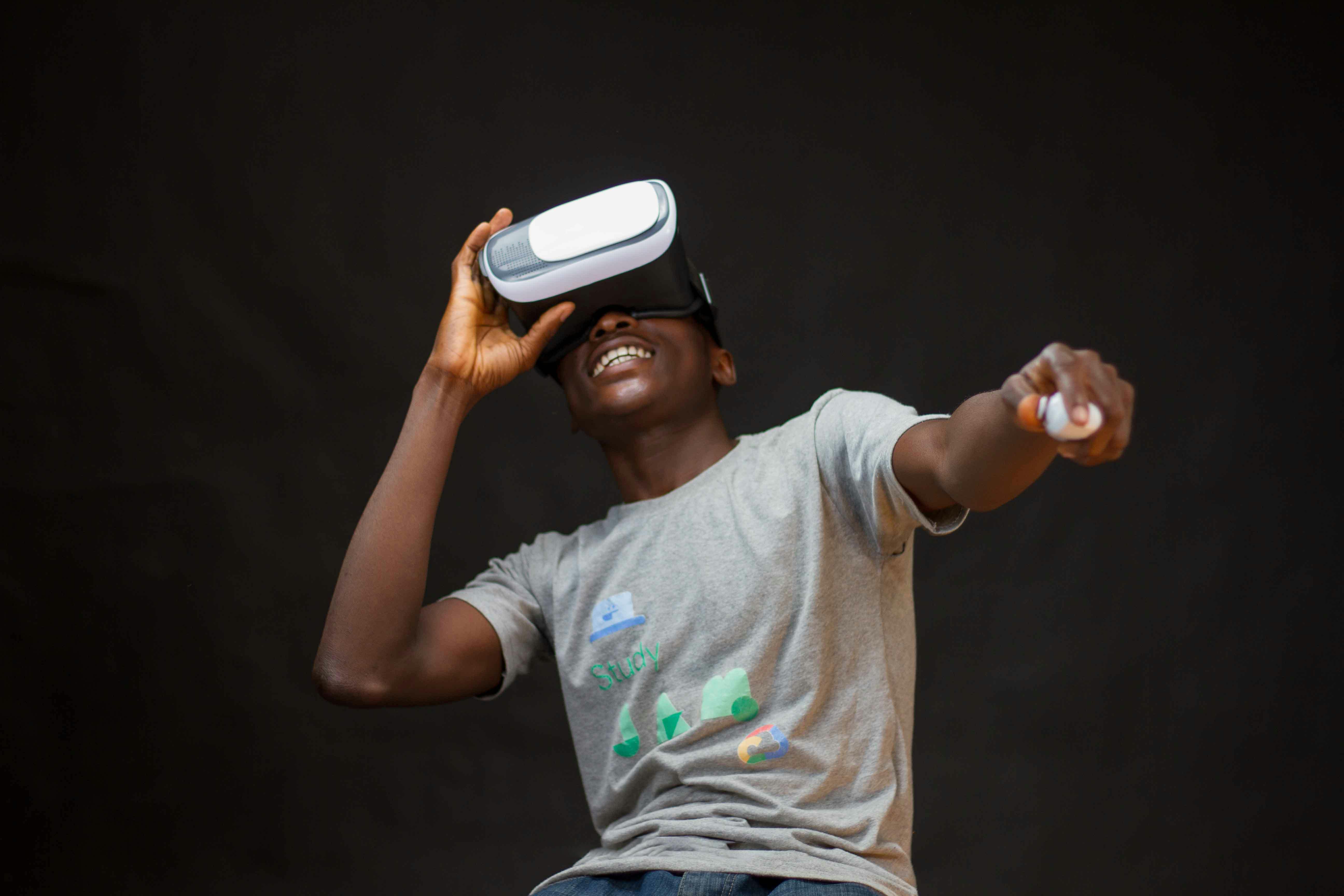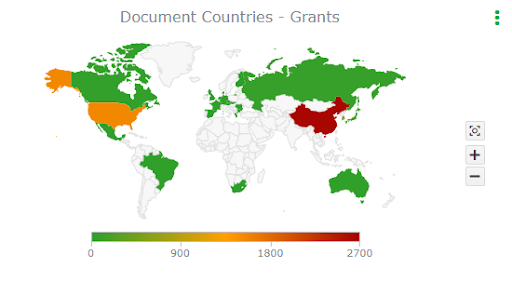Though people often associate virtual reality (VR) with cyberpunk, futuristic dystopias, or flashy consumer tech, the ideas behind VR aren’t exactly new. Attempts at designing mechanical devices that were the Oculus Rift of their era took place at least as early as the 1950s, and the concept of alternative realities overriding the everyday world of our senses dates back to at least the 1860s. To date, virtual reality has been used for simulation, training, and physical rehabilitation, and has made dramatic appearances in recent years in the consumer electronics space.
Early VR Tech
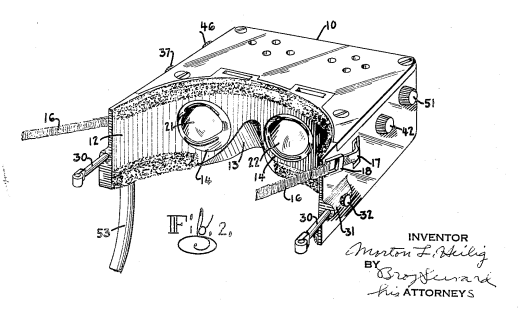
Patent US2955156A, Stereoscopic-television apparatus for individual use. This device was patented on October 4, 1960. Source: Espacenet. Search conducted in ktMINE
The Big Players
Facebook owns the largest number of worldwide granted patents for virtual reality technologies and seems to be winning in the marketplace as well. Facebook acquired VR manufacturer Oculus in 2014, and while PlayStation Virtual Reality (PSVR) beat out the Oculus Rift with 463,000 units sold in the third quarter of 2018, combining Oculus Rift sales with the 191,000 Oculus Go units sold puts Oculus in the lead. Though lackluster sales in prior years left some pessimistic about Facebook’s acquisition, Hugo Barra, the vice president of virtual reality at Facebook, expects VR to continue to grow alongside augmented reality (AR) technologies.
Microsoft owns the second largest number of granted VR patents, and the company recently opened an artificial intelligence (AI) and VR incubator in China. Microsoft’s mixed reality product, the Hololens, had sold only 50,000 units as of May 2018. However, the Hololens was released as a developer version with a hefty price tag, so future iterations of the product may see Microsoft gain ground.
At number three, Lincoln Global is an interesting addition. Lincoln Global itself is a welding company, and Lincoln Global’s sister company, Lincoln Electric, sells a niche product: virtual reality welding simulators for training purposes.
Magic Leap, with the fourth largest number of granted patents, is a unicorn startup that raised $2.3 billion in funding. Magic Leap was initially criticized for hyping up vaporware until the company began selling its AR headsets in limited locations. The first headsets cost $2,295.
Google also makes an appearance in the top five, despite its rocky entrance into the market.
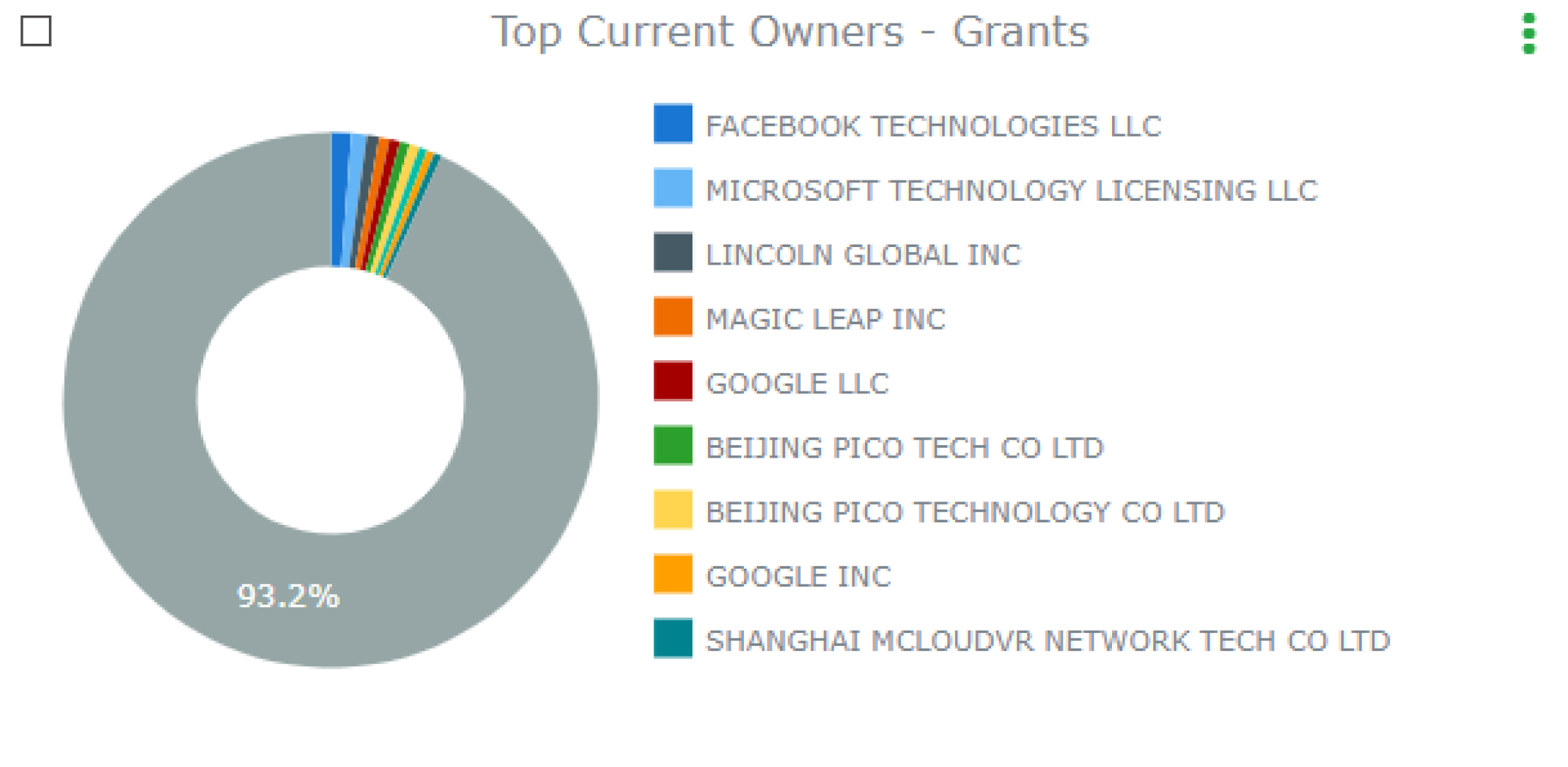 Virtual Reality Around the World
Virtual Reality Around the World
China currently has the largest number of patents for VR technologies, followed by the United States. According to a 2018 article on China Daily, the Chinese market for VR technologies is likely to hit 90 billion yuan by 2020. Compared to other countries, China seems to prefer standalone models.
Augmented Reality: VR’s Nerdy Younger Brother
Ever since the highly anticipated release and later flop of Google Glass, AR has been a big topic of discussion. Part of the appeal of AR technology might be the lack of undesirable side effects when compared to VR gear. VR screens have been known to cause unpleasant symptoms such as “stomach awareness” and even seizures. But AR also brings its own set of unique applications and opportunities, some incredibly practical. Where VR promises pie-in-the-sky goals by bringing to life entirely new worlds for users to throw up in, AR often shines when it stacks useful information on top of the world as it is.
On the consumer tech side, eyeglass company Warby Parker has been putting AR technology to use by allowing customers to try on glasses through an app on their phone. By using a cell phone’s camera, Warby Parker’s app is able to realistically render frames that move as you move, allowing customers to see what they look like under real wear conditions.
With a potential new AR Google maps product, Google may see a way to redeem itself. The product would use camera-based positioning to obtain a more accurate picture of where a user is located within a city and would overlay directional information on top of the user’s screen. On the B2B side, Boeing has reduced errors and made efficiency gains by using Google Glass to free up technicians’ hands.
Augmented Reality News Article Count Over the Past 10 Years
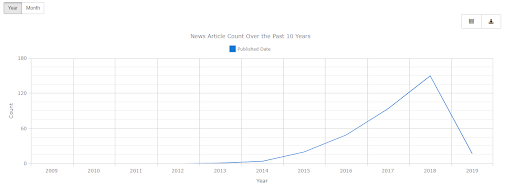
Source: ktMINE search
Virtual Reality News Article Count Over the Past 10 Years
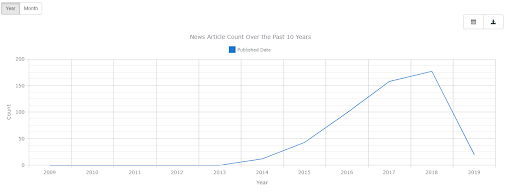
Source: ktMINE search
Outlook
There have been some spectacular failures for VR and AR in the consumer tech space, and accusations of vaporware abound, but investors and tech leaders still seem optimistic if the $963 million raised by Magic Leap in series D means anything. Many believe the success or failure of VR will depend on network effects. Hugo Barra expects to see a tipping point when a single platform gains 10 million users, and according to tech blogs, creating games and virtual reality content to view on new hardware will be key for getting and keeping users.
